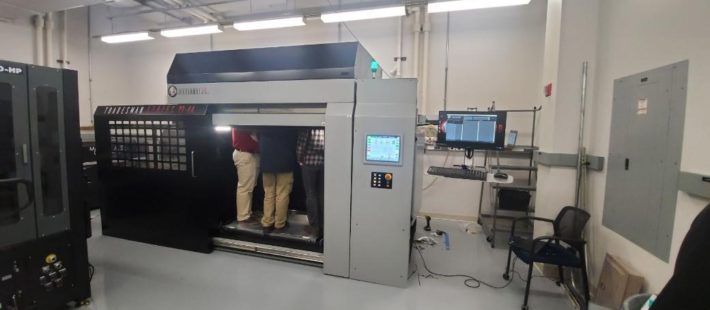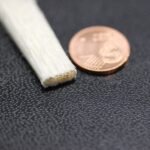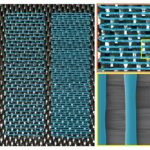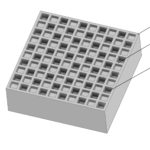DSM is expanding its additive manufacturing innovations in fused granulate fabrication (FGF). The company is partnering with Juggerbot 3D, an additive manufacturing machine builder who recently developed a printer equipped with extrusion technology, to explore the untapped potential of FGF printing. Together, the two companies will develop high-performance pellet printers and materials for industrial additive manufacturing.
The potential of pellet materials
As 3D printing continues to trend towards industrial manufacturing, a growing number of manufacturers are looking for 3D printing technologies and materials capable of meeting the strength, stiffness, and heat resistance required to create large structural applications. With filler ratios of up to 50%, pellet materials can meet performance requirements while not being bound by the constraints of some other 3D printing technologies.
DSM and JuggerBot 3D advance fused granulate fabrication
DSM and JuggerBot 3D are exploring the untapped potential of FGF printing to develop solutions that meet a growing need among manufacturers. JuggerBot 3D’s newest printer is designed specifically to process performance materials, like DSM’s glass-reinforced Arnite AM8527 (G). The company also leveraged DSM’s expertise during the development of its new P3-44 printer. The P3-44 has a build volume of three feet deep, four feet wide, and four feet tall, and is capable of producing parts up to 200 times faster than other machines.
DSM is one of the first partners to purchase JuggerBot 3D’s P3-44 printer. Set to further scale up additive manufacturing to industrial workflows, DSM will continue to add more pellet products to its growing portfolio of 3D printing solutions.
Removing barriers to adoption of 3D printing
After collaborating on a fused filament fabrication (FFF) 3D printer, the two companies are now working together to leverage cutting-edge technology, top-tier materials, and the sharpest minds in the 3D printing industry in order to revolutionize FGF additive manufacturing. Using the P3-44 and DSM material formulations, the two have established a development program for companies interested in FGF printing.
Hugo da Silva, VP Additive Manufacturing, affirms: “The need for pellet materials and printers that are able to produce large-scale applications is evident. Working side by side with innovative printer manufacturers like JuggerBot 3D allows us to create material solutions while ensuring manufacturers have access to reliable machines. Materials or printers alone are not sufficient for OEMs to adopt the technology. That is why a smoothly running ecosystem is so critical for additive manufacturing to be accepted on the production floor.”
Dan Fernback, Co-Founder at JuggerBot 3D: “We’re the largest barriers to the adoption of 3D printing with fused granulate fabrication. The P3-44 is truly a reliable, industrial-grade machine that allows users to tap into a plethora of production materials and scale their additive manufacturing efforts. We’re thrilled to further align our process expertise with DSM’s material expertise and serve as the go-to team for companies looking to take 3D printing to the next level.”
For more information: www.dsm.com, www.juggerbot3d.com












